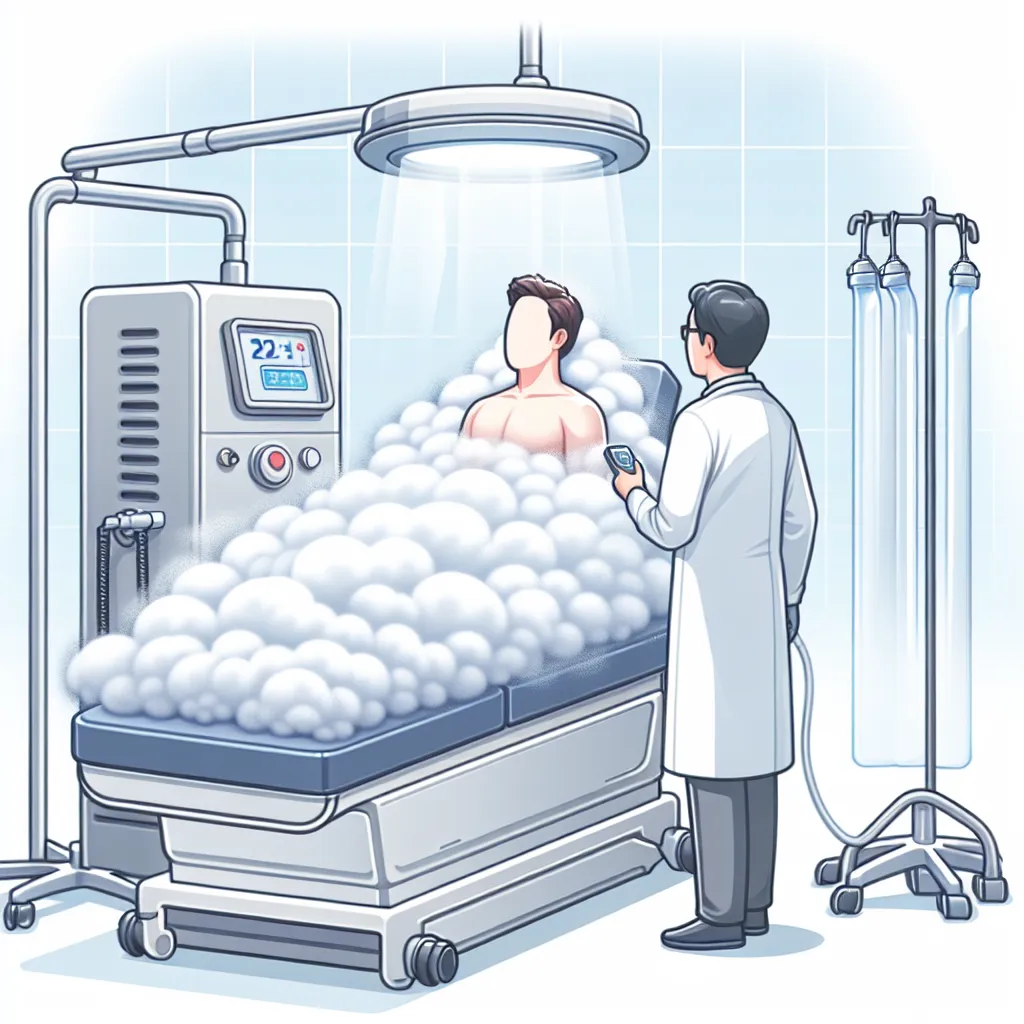Cold therapy, also known as cryotherapy, is a fascinating topic that often appears in IELTS exams, particularly in reading and speaking sections. As an IELTS teacher and language expert, I’ll guide you through the essential vocabulary related to cold therapy, helping you understand, remember, and effectively use these terms in your IELTS preparation and exam.
Nội dung bài viết
Understanding Cold Therapy
Cold therapy /koʊld ˈθerəpi/ (noun): A treatment that uses cold temperatures to reduce inflammation, pain, and swelling in the body.

Common Contexts
-
Medical treatment: “The doctor recommended cold therapy to reduce the swelling in my sprained ankle.”
- Analysis: This sentence demonstrates the use of cold therapy in a medical context, specifically for treating injuries.
-
Sports recovery: “Many athletes use cold therapy chambers after intense training sessions to aid in muscle recovery.”
- Analysis: This example highlights the application of cold therapy in sports, emphasizing its role in physical recovery.
-
Chronic pain management: “Patients with arthritis often find relief through regular cold therapy sessions.”
- Analysis: This sentence illustrates how cold therapy can be used as a long-term treatment for chronic conditions.
-
Mental health: “Some research suggests that whole-body cold therapy may help alleviate symptoms of depression and anxiety.”
- Analysis: This example introduces a less common but emerging application of cold therapy in mental health treatment.
-
Beauty and wellness: “Facial cold therapy is becoming increasingly popular in spas for its potential anti-aging effects.”
- Analysis: This sentence demonstrates the use of cold therapy in the beauty industry, broadening its scope beyond medical applications.
Frequency in IELTS
Cold therapy and related vocabulary frequently appear in IELTS Reading passages, particularly in health and science-related texts. In the Speaking test, it may come up in Part 3 discussions about health trends or alternative therapies. Writing Task 2 essays might require you to discuss the advantages and disadvantages of various medical treatments, including cold therapy.
Vocabulary Analysis
Word Structure
- Cold (adjective): /koʊld/ – Having a low temperature
- Therapy (noun): /ˈθerəpi/ – Treatment intended to relieve or heal a disorder
Combined, these words form a compound noun describing a specific type of treatment.
Synonyms and Antonyms
-
Synonym: Cryotherapy /kraɪˈɒθərəpi/ (noun) – The use of extreme cold in medical treatment
- Example: “Cryotherapy chambers expose the body to temperatures as low as -100°C for short periods.”
-
Synonym: Ice therapy /aɪs ˈθerəpi/ (noun) – The application of ice to reduce pain and inflammation
- Example: “Athletes often use ice therapy immediately after an injury to minimize swelling.”
-
Antonym: Heat therapy /hiːt ˈθerəpi/ (noun) – The use of heat to treat pain or stiffness
- Example: “While cold therapy reduces inflammation, heat therapy can help relax tense muscles.”
-
Related term: Thermotherapy /θɜːrməʊˈθerəpi/ (noun) – The use of heat or cold in medical treatment
- Example: “Thermotherapy encompasses both cold and heat treatments, each with its own specific applications.”
-
Antonym: Hyperthermia /ˌhaɪpəˈθɜːmiə/ (noun) – The condition of having a body temperature greatly above normal
- Example: “In contrast to cold therapy, induced hyperthermia is sometimes used in cancer treatments.”
Memorization Techniques
Mind Map
Create a mind map with “Cold Therapy” at the center, branching out to related concepts:
- Applications (Sports, Medicine, Beauty)
- Methods (Ice packs, Cryotherapy chambers, Cold water immersion)
- Benefits (Pain relief, Inflammation reduction, Faster recovery)
- Related treatments (Heat therapy, Contrast therapy)
Story or Image Association
Imagine a professional athlete stepping into a misty, futuristic cryotherapy chamber after an intense match. The icy vapor engulfs them, soothing their aching muscles and reducing inflammation. This vivid image connects cold therapy with its benefits and applications in sports.
Practice Exercises
Application in IELTS
-
Writing Task 2: “Some people believe that alternative therapies like cold therapy are as effective as traditional medicine. To what extent do you agree or disagree?”
-
Speaking Part 3: “How do you think technology has changed the way we approach health and fitness?”
-
Reading practice: Analyze a passage about the science behind cold therapy and its effects on the human body.
Repetition and Review
Create flashcards with “Cold Therapy” and related terms on one side and definitions or example sentences on the other. Review these regularly, especially before your IELTS exam.
Conclusion
Understanding and effectively using vocabulary related to cold therapy can significantly enhance your performance in the IELTS exam. Remember to practice using these terms in context, whether you’re writing essays, participating in mock speaking tests, or analyzing reading passages. By mastering this vocabulary, you’ll be well-prepared to discuss modern health trends and treatments in your IELTS exam.
We encourage you to share your experiences with learning this vocabulary in the comments section below. Have you encountered cold therapy-related topics in your IELTS preparation? How do you plan to incorporate these new terms into your study routine? Your insights could be valuable to other learners!
For more IELTS vocabulary guides, check out our articles on heat therapy and bone marrow to expand your medical vocabulary further.